You are using an out of date browser. It may not display this or other websites correctly.
You should upgrade or use an alternative browser.
You should upgrade or use an alternative browser.
V4R Saves the Day! 2022 PV4 First Failure....
- Thread starter RickD996
- Start date

Help Support Ducati Forum:
- Joined
- May 28, 2022
- Messages
- 3,368
- Location
- USA
All of the photos of the process
Oh of course, I didn’t take photos but I will be more than happy to repeat the process and photographically document it and post it later this afternoon, no problem. If you would be so kind to at some point include the methodology that you used to deduce your hypothesis, (mechanical application, mechanical modeling etc) that would be most appreciated.
- Joined
- May 28, 2022
- Messages
- 3,368
- Location
- USA
Oh of course, I didn’t take photos but I will be more than happy to repeat the process and photographically document it and post it later this afternoon, no problem. If you would be so kind to at some point include the methodology that you used to deduce your hypothesis, (mechanical application, mechanical modeling etc) that would be most appreciated.
Okaaaaaay…
LOL, that’s funny but what’s really funny is you absolutely know I’m posting pics and results of what I wrote today. You also know that you won’t be putting up anything because everything you posted, you pulled right out of your ass. So predictable.
- Joined
- Jul 10, 2020
- Messages
- 6,445
- Location
- Gulf of America
Nope top of the sensor. I’d wager the heat that kills these sensors comes from the convection of the hot exhaust rather than conduction from the engine case. That’s why they put that cooling channel to direct cool air towards it. Exhaust headers at WOT are probably in around 600-800°F and I’m assuming the surrounding air is probably half that (most plastics start melting at 400°F so air temps have to be less or it would melt the fairings). Oil temp max would be 275° but I think they’d be running a pretty significant margin from that and the engine itself runs around 220-230°F.
So I’d take the insulative effects of the foil tape over the convective effects of heat soaking. Unless you’re willing to run cool air over the sensor when you get back to the pits with a leaf blower.
Also, wouldn’t running washers under the sensor create a gap where dirt and debris could enter the engine intervals? Or is the system closed off from that?
With gold foil on the top of the sensor you'd also by insulating it from the cool(er) air directed on it by the duct. Presuming of course the duct is even effective at doing so. Air really isn't a good conductor of heat. Conduction from the magnesium/aluminium engine case would be much better at soaking heat into the sensor. The sensor is kind of tucked away from the exhaust too. If you want to talk heat soak from the exhaust I'd think the rear shock would be suffering more for sure.

Its closed under the sensor. The sensor just detects a magnet through the engine case.
- Joined
- Jul 22, 2020
- Messages
- 2,139
- Location
- texas
What’s this showing - rear shock reservoir heat shielding? WSBK?
- Joined
- May 28, 2022
- Messages
- 3,368
- Location
- USA
Man this thing has gone full Inside Edition. Soooo, went to the garage and pulled out the IR gun. Taking multiple readings at various angles etc, the absolute highest thermal register was the cover that the sensor mounts to so in my particular case, insulating the sensor from that is the way to go, and I did emphasize, my scenario. Get your IR probe out and start poking around. Maybe the best solution is a multi faceted approach.
Didn’t know you could measure air temps with an IR gun. News to me... And was this measured during a track day session/dyno session at WOT or at idle? With or without fairings on? With cool air running over it or stagnant air?
I think the easiest way to do this would be to slap a temp-indicating label on the sensor and see how hot things get on a track day.
https://www.mcmaster.com/temperature-indicating-stickers/
Really, no it wasn’t because that’s not what the context of your conversation was. The context and debate that you interjected specifically centered around where the most offensive heat was coming from. I specifically did a test on my platform to determine where the most heat was being introduced into the sensor. If you had specified exact test parameters then we would be having a different conversation. So I will pictorially post what my findings were and you do the same. And yes, there is an ambient temp sensor in the IR meter. You want to go head to head man, ....... bring it.
- Joined
- Jul 10, 2020
- Messages
- 6,445
- Location
- Gulf of America
Yeah, WSBK rear shock heat shield. I wonder if doing so prevents some of the inconsistency track guys seems to note about the platform.What’s this showing - rear shock reservoir heat shielding? WSBK?
- Joined
- Jul 10, 2020
- Messages
- 6,445
- Location
- Gulf of America
Hello guys,
It has been awhile, but here is the current state of affairs.
From the two sensors ordered the second hand one arrived, and the new 'Ducati' one we are still waiting on.
The second hand one has undergone some modifications in order to help with the heat transfer from the engine. The cooling is done in order to achieve desirable behavior and avoid 'frying the sensor a third time.
So what we did:
We took a CPU cooling radiator, some high quality thermal paste to help with the heat transfer between the sensor and the radiator and we crafted two spacers in order to help with the heat not being transferred directly from the gearbox casing to the sensor.
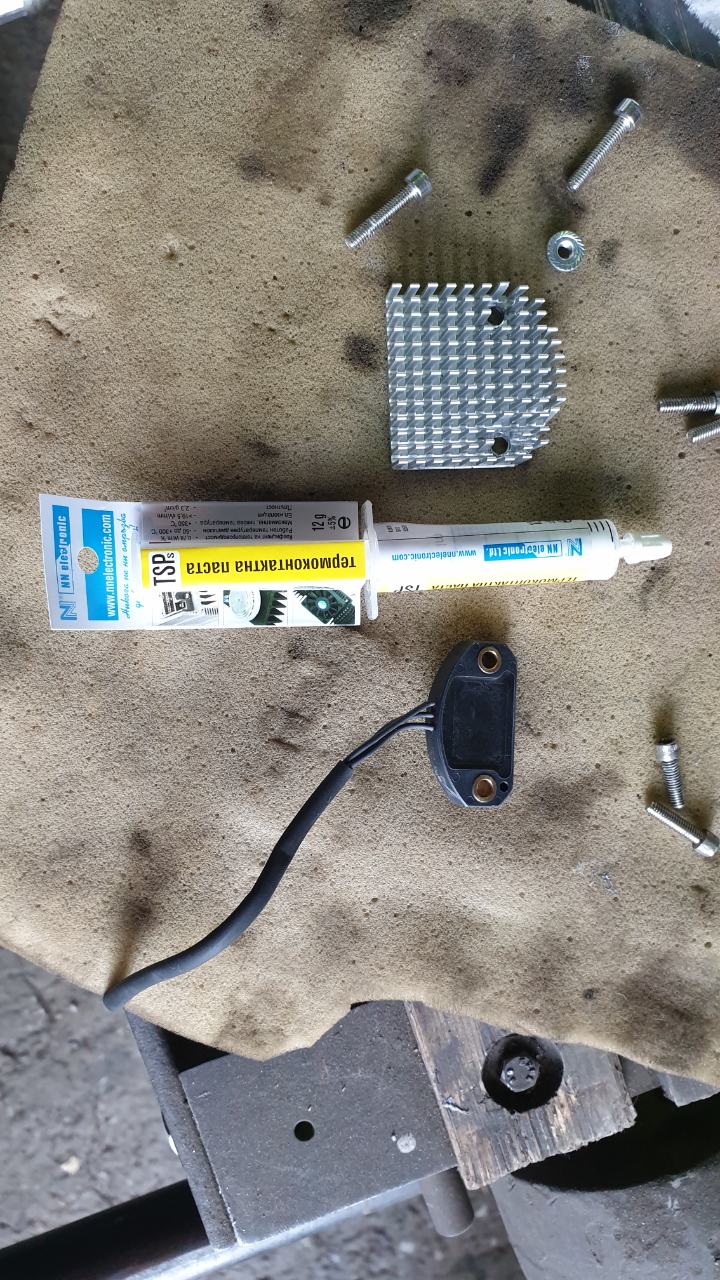
Here is the sensor with the thermal paste installed:
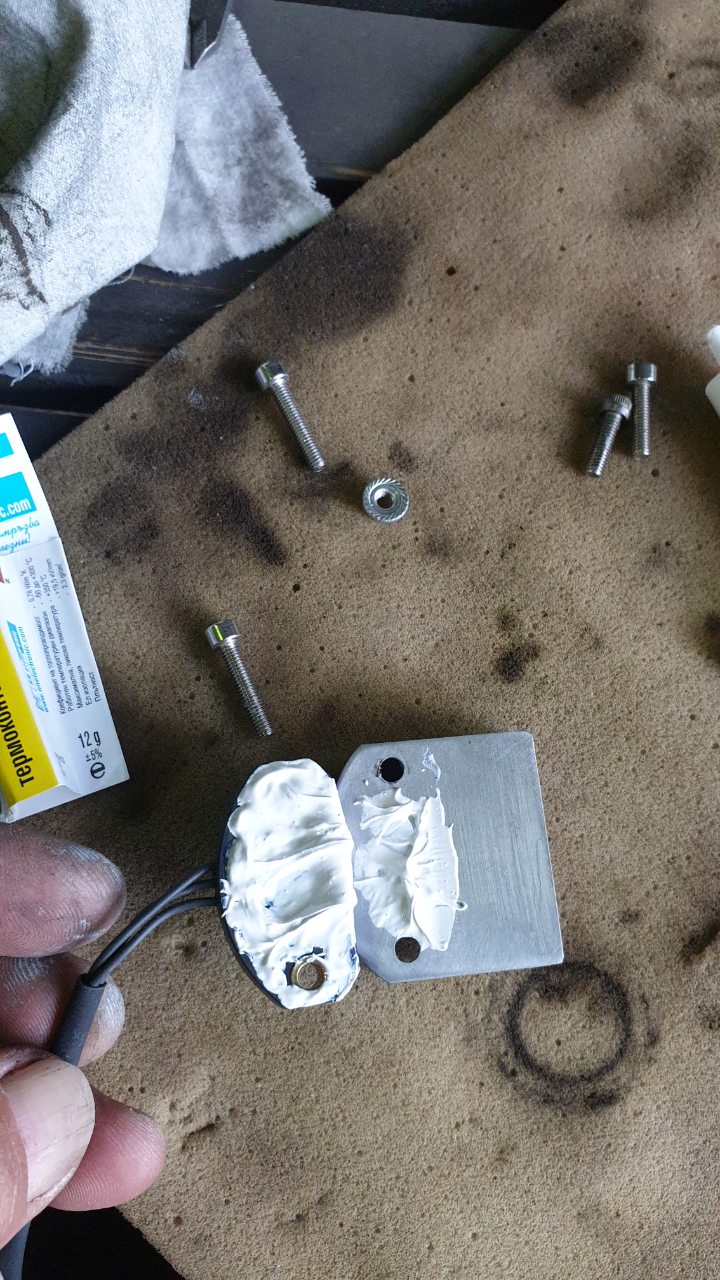
Here is the sensor with all the 'improvements':
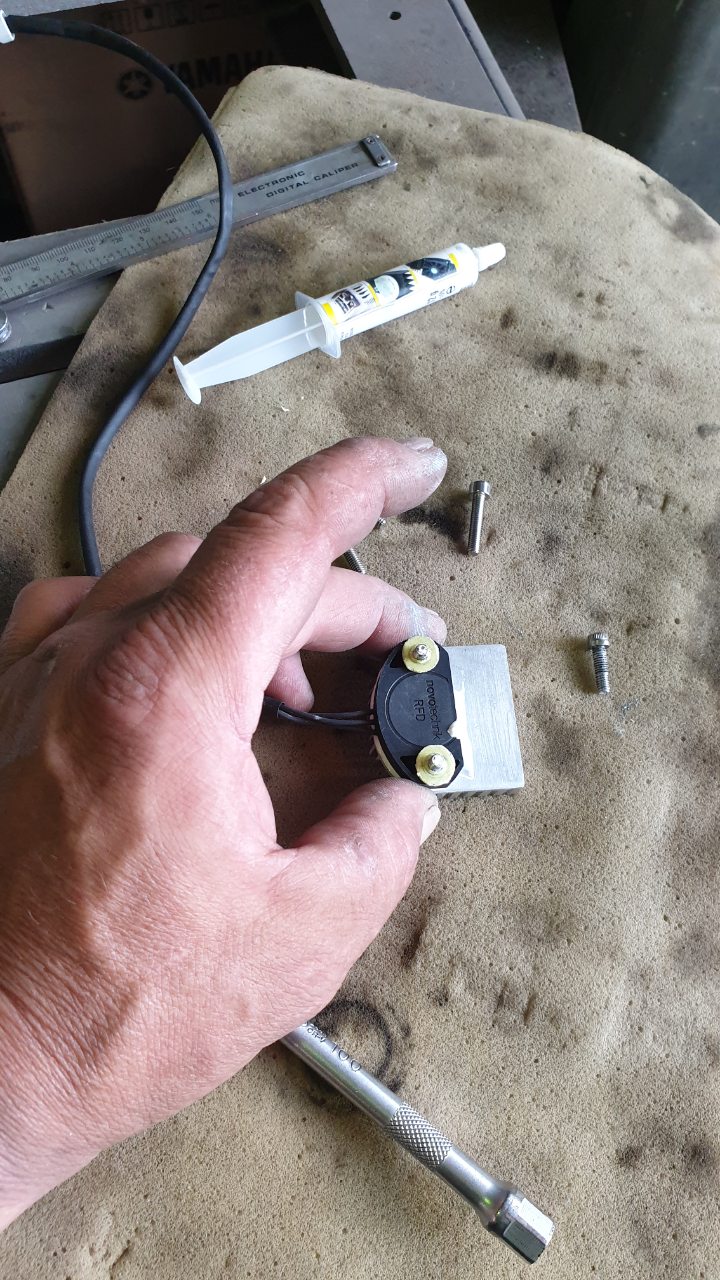
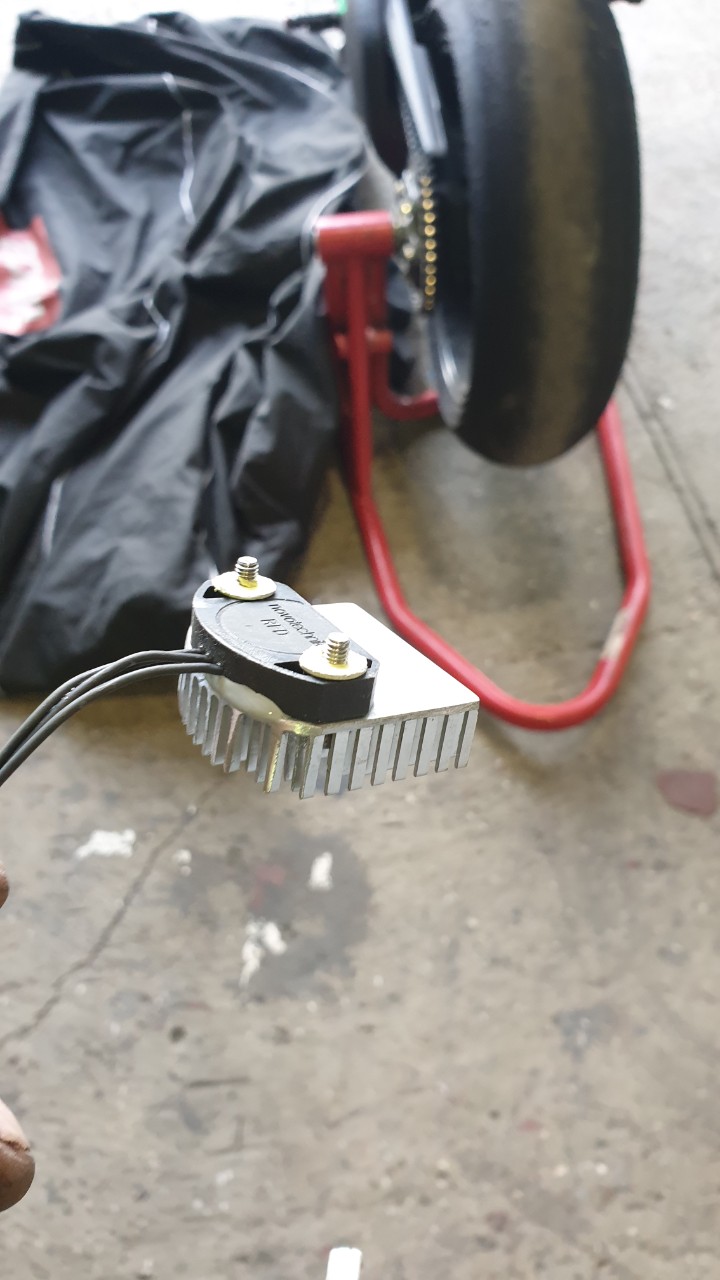
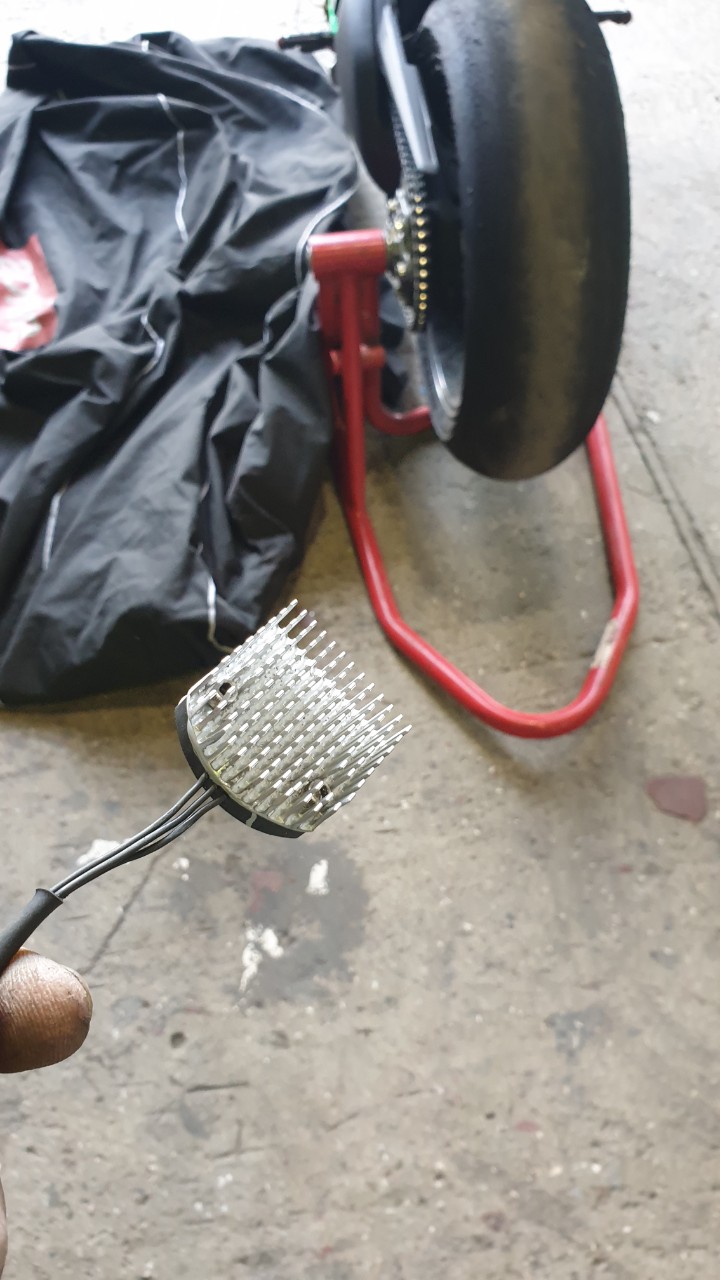
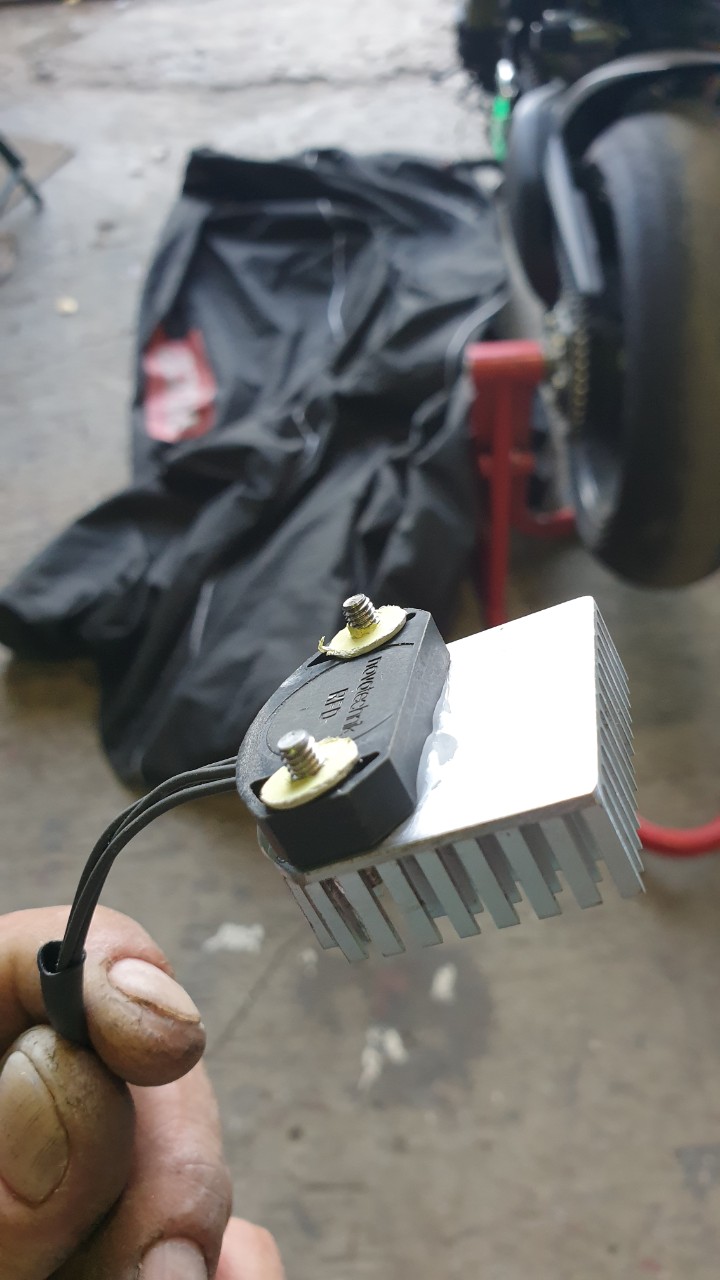
Here is the finished bike improvement (mounted on the bike):
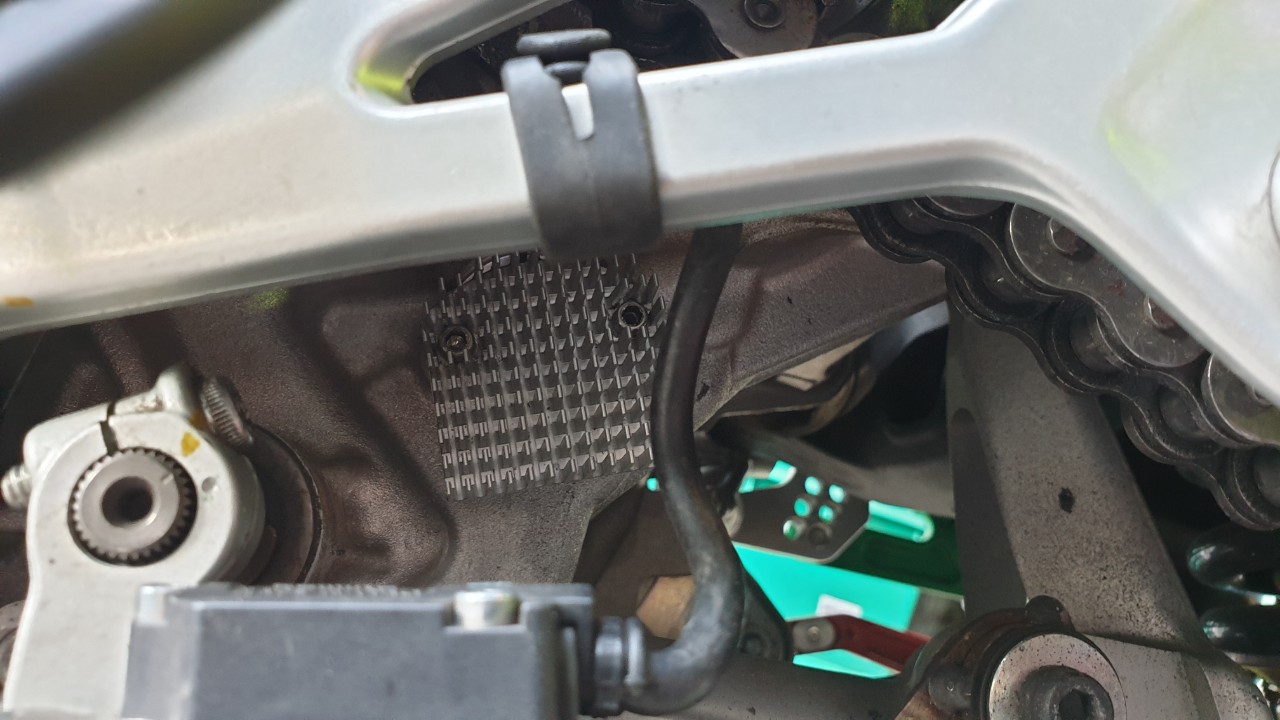
I just returned from a two-day track test with ambient temperature of 38 degrees Celsius (100 Fahrenheit). I am happy to announce that 300 miles later the sensor is still operational and works like a charm!
Also, there was no problem whatsoever with gear detection and indication.
I am not sure if all these precautionary actions are necessary in order to keep it functioning, but what I know is that traveling to a track-day and realizing you can't ride is very unwanted situation for everyone.
I hope this helps someone else too!
Thank you for all the help and community feedback guys. Stay safe!
https://ducatiforum.com/t/help-need...nsor-and-dqs-ducati-v4-2018.39144/post-338918
Heat sink + spacers.
The only thing I would do different is to use a thermal pad instead of paste and I will be trying insulating washers first.
I'd also theorize if the heat from the exhaust was heating the sensor, putting a heatsink would make the problem worse since a heatsink works two ways.
Last edited:
- Joined
- Jul 10, 2020
- Messages
- 6,445
- Location
- Gulf of America
Going through an older thread here it looks like spacers were a popular solution.

I could look at a prepped WSBK all day.

That’s the thing with these race bikes. The closer you look at the details, the more you see the details and all the .... that needed modifications. That shock shield looks like it was built in the final hour. Not pretty but it works
I could look at a prepped WSBK all day.
- Joined
- May 1, 2021
- Messages
- 3,187
- Location
- SoCal
My sensor is holding up today…and it’s 38 degrees Celsius….about 100 Fahrenheit
- Joined
- Sep 29, 2019
- Messages
- 2,044
- Location
- London
Going through an older thread here it looks like spacers were a popular solution.
View attachment 43443
I could look at a prepped WSBK all day.
The Hirschmann sensor looks better thought out. I appreciate the plastic designed to limit heat soak from the screws to the sensor.
- Joined
- Nov 23, 2018
- Messages
- 3,632
- Location
- N
I considered a heat shield on my shock reservoir, but I figured that it was designed to operate at fairly high temps otherwise surely there would be remote/finned/shielded reservoirs?
- Joined
- Jul 10, 2020
- Messages
- 6,445
- Location
- Gulf of America
I don't know if you track your bike, but I'd think you'd have to be for heat soak on the shock to matter. I doubt on the street it matters unless you ride in 1st gear on the highway.
Just the fact that its on a WSBK Panigale tells me there's a need for it. Granted those dudes are riding at a much higher level than I am, so I doubt I need it. Same as brake ducts really.
Just the fact that its on a WSBK Panigale tells me there's a need for it. Granted those dudes are riding at a much higher level than I am, so I doubt I need it. Same as brake ducts really.
- Joined
- Jul 10, 2020
- Messages
- 6,445
- Location
- Gulf of America
My sensor is holding up today…and it’s 38 degrees Celsius….about 100 Fahrenheit
Damn, how are you holding up though?
@RickD996 is racing which I suspect he's doing more laps per session/race than one would on a typical track day. I could be wrong, I have yet to do either.
Similar threads
- Replies
- 26
- Views
- 3K
Register CTA
Register on Ducati Forum! This sidebar will go away, and you will see fewer ads.
Sign Up
